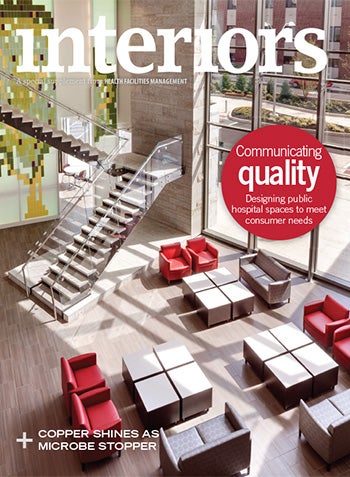Patient experience is king
 |
| Communicating quality By Amy Eagle Precious metal By Amy Eagle |
An interesting dynamic is unfolding amid the shift to value-based health care. Just about everyone is rebranding. Hospitals and health systems are rebranding themselves. Insurers are now health care companies. Technology firms and other suppliers are health care companies. Consultants are health care companies. About the only ones who aren’t rebranding themselves are consumers.
Yet, consumers, too, find themselves in a new role. More is expected of them. They are paying more out-of-pocket expenses for their care. They are more accountable for their health and wellness, something employers and payers are only too quick to point out. In this new era, many patients are taking a harder look at what they get for their health care dollars — right down to the facilities in which care is delivered.
In at least this respect, the consumer is king. And more and more patients are willing to move on when their expectations aren’t met.
In our first feature in this edition of Interiors, we explore how hospital spaces are being designed to meet consumer needs. This report examines design elements that promote healthy behaviors, furnishings that have a family-first sensibility and also provide basic necessities to today’s consumers, such as access to outlets to recharge tablets or laptops. In addition, we look at ways in which some facilities are making hand-hygiene stations as prominent and accessible to patients and their families as they are to clinical caregivers.
Our second report examines why hospitals and health systems increasingly are taking a more discerning look at surface material choices in patient care areas and why many are cladding bedrails, cabinet pulls, door handles and other high-touch objects with copper alloy materials. The 5,000-year-old “technology” is being rediscovered for its natural antimicrobial properties.
This report will take you inside a couple of organizations that have been documenting the positive impact of using copper surfaces in high-touch areas to reduce health care-associated infections and produce a valuable return on investment.
Bob Kehoe is a senior editor of Health Facilities Management.
A note of acknowledgment
The editors thank the many vendors and health care design firms who participated in this supplement. The following sources provided images used in this project:
• CFGroup (Newport, Tenn.)
• GOJO Industries (Akron, Ohio)
• KI (Green Bay, Wis.)
• CuVerro by Olin Brass (Louisville, Ky.)
• Copper Development Association (New York City)




